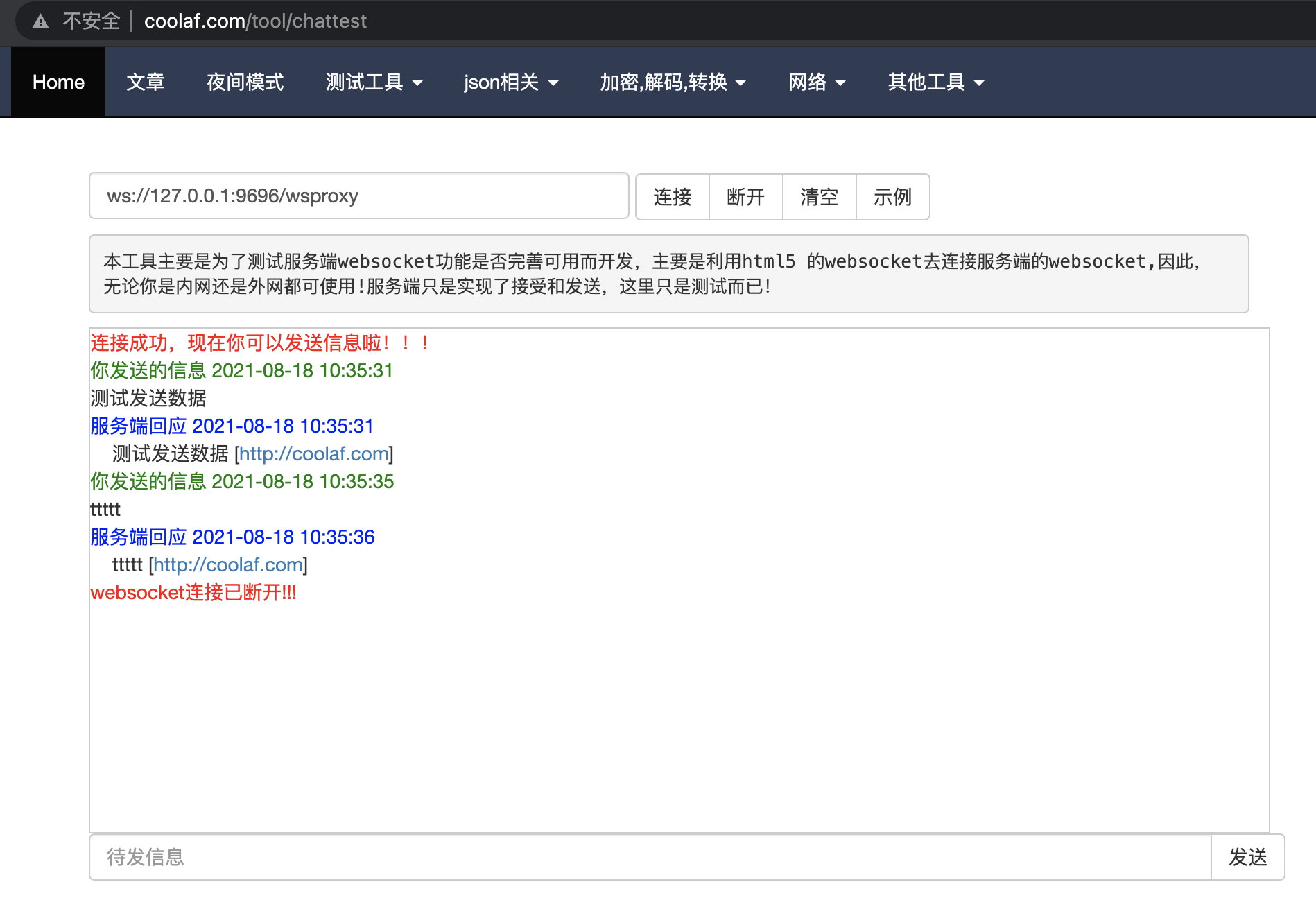100 lines of code implements a lightweight websocket proxy library, does not depend on other third-party libraries, and supports ws and wss proxies; if you only need a simple websocket traffic proxy function without any modification to the forwarded content, using this library will be very useful.
- Extreme performance, almost no performance loss, very low consumption of cpu and memory
- Support websocket handshake phase for management and control
- Supports setting header headers (cookie, origin, etc.) in the handshake phase
- Support ws, wss proxy
go get github.com/pretty66/websocketproxy
import (
"github.com/pretty66/websocketproxy"
"net/http"
)
wp, err := websocketproxy.NewProxy("ws://82.157.123.54:9010/ajaxchattest", func(r *http.Request) error {
// Permission to verify
r.Header.Set("Cookie", "----")
// Source of disguise
r.Header.Set("Origin", "http://82.157.123.54:9010")
return nil
})
if err != nil {
t.Fatal()
}
// proxy path
http.HandleFunc("/wsproxy", wp.Proxy)
http.ListenAndServe(":9696", nil)Run the test file and start listening on the 127.0.0.1:9696 port, and use the online testing tool http://coolaf.com/tool/chattest to connect to the proxy to test the request response
func (wp *WebsocketProxy) Proxy(writer http.ResponseWriter, request *http.Request) {
// Check whether it is a Websocket request
if strings.ToLower(request.Header.Get("Connection")) != "upgrade" ||
strings.ToLower(request.Header.Get("Upgrade")) != "websocket" {
_, _ = writer.Write([]byte(`Must be a websocket request`))
return
}
// Hijack connections
hijacker, ok := writer.(http.Hijacker)
if !ok {
return
}
conn, _, err := hijacker.Hijack()
if err != nil {
return
}
defer conn.Close()
// Clone request, set destination address path
req := request.Clone(context.TODO())
req.URL.Path, req.URL.RawPath, req.RequestURI = wp.defaultPath, wp.defaultPath, wp.defaultPath
req.Host = wp.remoteAddr
// Handshake before callback
if wp.beforeHandshake != nil {
// Add headers, permission authentication + masquerade sources
err = wp.beforeHandshake(req)
if err != nil {
_, _ = writer.Write([]byte(err.Error()))
return
}
}
// Determine the protocol and select the dialing process
var remoteConn net.Conn
switch wp.scheme {
case WsScheme:
remoteConn, err = net.Dial("tcp", wp.remoteAddr)
case WssScheme:
remoteConn, err = tls.Dial("tcp", wp.remoteAddr, wp.tlsc)
}
if err != nil {
_, _ = writer.Write([]byte(err.Error()))
return
}
defer remoteConn.Close()
// Sends a handshake packet to the target WebSocket service
err = req.Write(remoteConn)
if err != nil {
wp.logger.Println("remote write err:", err)
return
}
// Traffic transparent transmission
errChan := make(chan error, 2)
copyConn := func(a, b net.Conn) {
_, err := io.Copy(a, b)
errChan <- err
}
go copyConn(conn, remoteConn) // response
go copyConn(remoteConn, conn) // request
select {
case err = <-errChan:
if err != nil {
log.Println(err)
}
}
}
websocketproxy is under the Apache 2.0 license. See the LICENSE directory for details.


